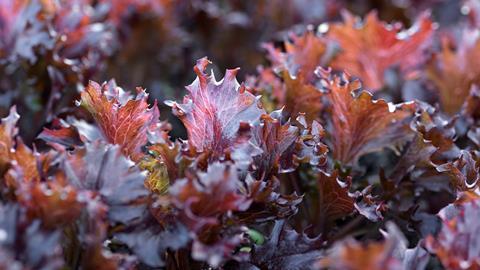Threat of downy mildew appears to be accelerating in lettuce
Three new races of Bremia lactucae have been added to the official list of phytopathogens responsible for lettuce downy mildew, all of which are now covered by Syngenta varieties resistant to the strains.
The International Bremia Evaluation Board (IBEB-EU) listed races 38, 39 and 40 on 1 July 2023, following the highly damaging pathogens’ spread in several European countries, including the UK. The move comes just two years after race 37 was officialised by IBEB in 2021.
The speed of new race development and declaration has highlighted the phenomenon of circumvention is potentially accelerating, according to Syngenta.
In addition to making these three new races official, IBEB has updated its codification of resistance to mildew: previously, a variety was declared completely resistant if it covered races 16 to 37; from now on, the complete resistance of a variety is defined on races 29 to 40.
Thomas Dumont, Syngenta product manager for lettuce, spinach and babyleaf in UK, France and the Nordics, explained: “It is only thanks to the close partnership between our breeders, our sales representatives, growers and the whole of the industry that we are able to monitor the evolution of downy mildew races in the field.
“This collaborative work, combined with the development of our own resistance genes and their integration into different genetic systems, means that we can now already offer lettuce varieties that are resistant to these three new races of mildew,” he said.
Syngenta UK lettuce and babyleaf specialist Harry Twinberrow added: “Our variety breeders are only too aware of the major challenge that these three new strains represent for crop safety and the value of resistance in an IPM strategy.
“They have already updated the variety portfolio to meet these new needs. All the lettuce segments we work on now have varieties resistant to Bremia races 38, 39 and 40.”




